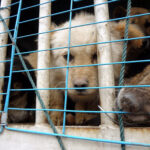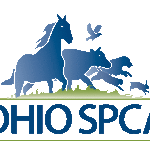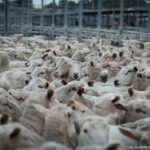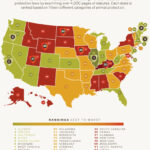In recent years, there has been a profound shift in consumer consciousness surrounding animal cruelty, particularly within the beauty industry. As awareness of the inhumane practices associated with product testing grows, many individuals are beginning to question the ethical implications of their purchases. The prevalence of animals subjected to pain and suffering under the guise of beauty product efficacy raises important questions about our societal values and the very definition of beauty itself.
Animal cruelty in the beauty industry predominantly manifests through the practice of animal testing, a systematic approach where substances are applied to the skin, ingested, or injected into live animals, which may endure significant pain, enduring psychological stress, or even death in the name of cosmetic safety. The history of this practice reveals a concerning revelation: the use of animals has been a standard operating procedure in laboratories for decades, with an alarmingly high number of familiar brands resorting to these archaic methods.
Statistically, research suggests that as many as 100 million animals—including rats, rabbits, guinea pigs, and dogs—are utilized annually for testing purposes globally. The justification often provided for these ethically dubious practices is the purported necessity to ensure human safety. However, it is essential to interrogate the underlying assumptions of this rationale. Are the beauty products marketed as ‘safety-tested’ truly safer, or are they merely a facade of security that conceals an uncomfortable truth?
Furthermore, the tests performed on these animals often yield results that do not accurately translate to human responses. In fact, the biological differences between humans and common test species can lead to misleading conclusions, rendering animal testing an obsolete practice in many cases. This piques a concern: do consumers even recognize the significant ethical ramifications of their purchases? Or do they remain blissfully unaware, enchanted instead by lush advertising and enticing promises of beauty?
As the dialogue surrounding animal welfare expands, emerging trends signal a shift towards cruelty-free products and ethical alternatives. Companies that choose to eliminate animal testing from their production processes are not merely appealing to the ethical sensibilities of consumers; they are often witnessing substantial financial success. This suggests a critical public demand for ethically sourced products that prioritize animal welfare and human safety alike.
The advent of technology has provided innovative alternatives to inhumane testing practices. Advancements in cellular biology, for instance, offer scientists the capability to utilize human cells and tissue cultures, which not only bypass the need for animal subjects but also provide more accurate and relevant data regarding human reactions to cosmetic products. These alternatives are emblematic of a burgeoning ethical paradigm that values compassion and responsibility toward all living beings.
Despite the growing acceptance of cruelty-free options, some companies still rely on outdated protocols. The reasons for their persistence can be multifaceted. Corporate transparency, or lack thereof, can fuel consumer skepticism regarding brands that claim to be cruelty-free while retaining ties to animal testing through third-party suppliers. This situation creates a convoluted landscape for consumers trying to navigate their purchasing choices. Moreover, regulatory environments vary significantly, with some regions placing stringent restrictions on animal testing while others maintain a laissez-faire attitude. These discrepancies create a convoluted marketplace, wherein consumers are often left searching for clarity amidst a sea of conflicting information.
Addressing the issue of animal cruelty in the beauty industry necessitates an understanding of broader societal narratives about beauty itself. The pervasive desire for aesthetics often overshadows ethical considerations. Yet, there exists a growing movement of individuals who wish to redefine beauty. This movement embraces an ethos that intertwines ethics and aesthetics, positing that true beauty arises from compassion, sustainability, and integrity rather than superficiality alone.
As environmentally and socially conscious consumers, it is imperative to cultivate a mindset that interrogates the practices behind our favorite products. Support for brands that prioritize humane practices ensures that consumer choices resonate with compassion, thereby fostering an industry that respects all living beings. This commitment to ethical beauty is more than a mere trend; it represents a profound yearning for change, illuminating a path toward an industry free from animal cruelty.
In this landscape of evolving consumer consciousness, education becomes paramount. Brands that embrace transparency regarding their sourcing and testing philosophies merit recognition and support. Conversely, those that disregard the ethical imperative to eschew animal testing must be held accountable. Proliferating awareness and advocating for ethical consumerism can catalyze a significant shift in industry standards, reinforcing that compassion is a fundamental tenet of true beauty.
Ultimately, the question remains: Can we reconcile our desire for beauty with our moral responsibility toward animal welfare? The answer lies in consumers’ willingness to rise against archaic practices and demand change. By embracing ethical choices, society can redefine beauty, coloring it not only with luxury and allure but also with kindness and respect for all living creatures. The time for transformation is now, and together, we can pave the way toward a cruelty-free beauty industry.






